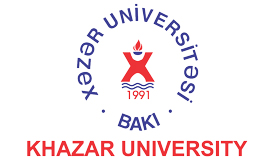International Conference on Materials Science and Research
November 16-18, 2017 Dubai, UAE
Heterogeneous Nucleation Theory Revisited: Effect of Triple Junction Line Energy
1Materials, Loughborough University, UK
2Institut für Metallkunde und Metallphysik, RWTH Aachen University, Germany
This paper will re-consider the basic aspects of solid state classical heterogeneous nucleation theory. In particular it will show how recent experimental work that has been able to estimate grain boundary triple junction line energy can be used to supplement the understanding of the energy balance operating during nucleation. This implies that the energy of the newly created interface needs to be recalculated, assuming that the additional line energy of the line surrounding the precipitate in the plane of the boundary is taken into account. Examples will be given of the application of this revised approach to GB precipitate nucleation of cap-shaped particles of chromium carbide in nickel based alloys. It will be shown that original assumed values of the precipitate-matrix interfacial energy for this transformation have to be revised downward for critical nucleus sizes of less than about 10nm.
Biography:
Professor Roy Faulkner (Loughborough Materials Ltd) has been involved with nuclear reactor materials research for almost three decades. He was employed as a consultant to UKAEA, Harwell from 1980-90, and has led are search group interested in nuclear reactor materials at Loughborough University since 1990, with funding support from Rolls Royce Naval Marine, EDF, Magnox, EPSRC, and Oak Ridge National Laboratories. His interests are in breeder blanket ferritic ODS steel development for fusion, radiation-induced grain boundary segregation of P in Pressure vessel steels, and radiation induced chromium depletion in austenitic steels. Non- irradiation based interests, but still relevant to the current project proposal, are thermally induced chromium depletion modeling and experimental validation in Alloys 600 and 690, modeling and validation of micro structural evolution in ferritic and austenitic steels, and nickel base alloys, and its relation to creep and fracture toughness properties in these alloys. His overall mission is to provide, by modelling, a better understanding of micro structural changes occurring in high alloy steels and nickel based alloys in irradiation and high temperature environments. This mission is supported by a strong experimental expertise in high resolution microscopy techniques, most of which are available in the Loughborough Materials Characterisation Centre. He is Past-President of the East Midlands Metallurgical Society, Chairman of the IOM3 Publications Committee, and past Chairman of the IOM3 Younger Members Committee. He is also Past-Chairman of the Midlands Microanalysis Group.



